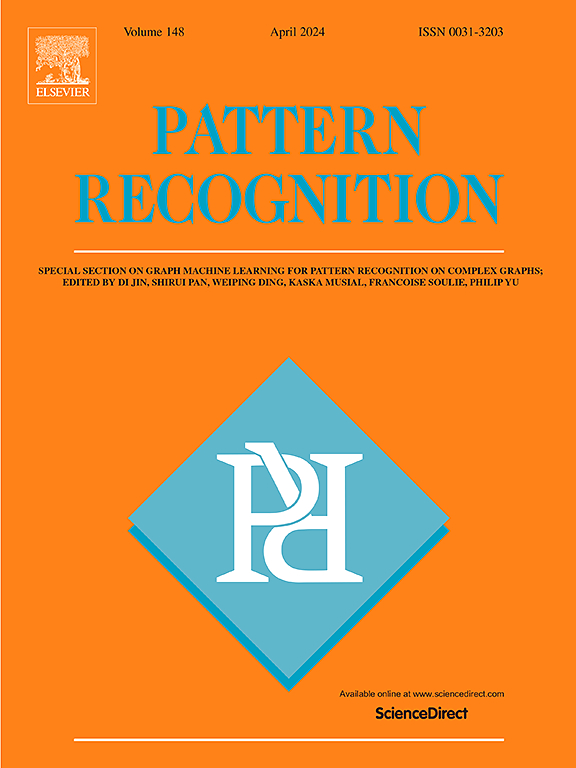SAR image change detection via generalized extreme value (GEV) modeling
IF 7.5
1区 计算机科学
Q1 COMPUTER SCIENCE, ARTIFICIAL INTELLIGENCE
引用次数: 0
Abstract
The rapid growth of high-resolution synthetic aperture radar (SAR) images has created new challenges for change detection methods. High-resolution SAR images often exhibit extremely heterogeneous terrain, resulting in severe long-tailed distributions in the image histogram. Traditional change detection methods based on hypothesis testing theory rely on Gamma distributions, which struggle to accurately model the complex scenes in high-resolution images. Recently the Generalized Extreme Value (GEV) distribution is proven effective in describing the long-tail phenomenon. In this paper, we introduce GEV model into the hypothesis test theory and propose a GEV-based SAR change detection method. First, there may exist two or more heterogeneous components in a certain scene in high-resolution SAR images. We oversegment the image into homogeneous local regions using a superpixel algorithm and model each region with the GEV distribution. Based on this distribution, we then derive the GEV-based likelihood-ratio test (LRT) statistics to measure the similarity of two superpixels for unsupervised change detection. Finally, by analyzing the asymptotic behavior of the GEV-based LRT, we apply a threshold to obtain the change maps (CMs). To evaluate the performance of our approach, we conduct Monte Carlo experiments using empirical data to investigate the goodness-of-fit performance and asymptotic behavior of the LRT. Our method demonstrates superior performance compared to state-of-the-art approaches, achieving the highest overall accuracy in both studied areas.
基于广义极值(GEV)模型的SAR图像变化检测
高分辨率合成孔径雷达(SAR)图像的快速增长对变化检测方法提出了新的挑战。高分辨率SAR图像往往表现出极其不均匀的地形,导致图像直方图出现严重的长尾分布。传统的基于假设检验理论的变化检测方法依赖于伽玛分布,难以准确地模拟高分辨率图像中的复杂场景。近年来,广义极值(GEV)分布被证明是描述长尾现象的有效方法。本文将GEV模型引入假设检验理论,提出了一种基于GEV的SAR变化检测方法。首先,在高分辨率SAR图像中,某一场景可能存在两种或两种以上的异质性成分。我们使用超像素算法将图像分割成均匀的局部区域,并用GEV分布对每个区域进行建模。基于这种分布,我们推导了基于gev的似然比检验(LRT)统计量,以测量用于无监督变化检测的两个超像素的相似性。最后,通过分析基于gev的LRT的渐近行为,我们应用一个阈值来获得变化映射(CMs)。为了评估我们的方法的性能,我们使用经验数据进行蒙特卡罗实验来研究LRT的拟合优度性能和渐近行为。与最先进的方法相比,我们的方法表现出优越的性能,在两个研究领域都实现了最高的整体准确性。
本文章由计算机程序翻译,如有差异,请以英文原文为准。
求助全文
约1分钟内获得全文
求助全文
来源期刊

Pattern Recognition
工程技术-工程:电子与电气
CiteScore
14.40
自引率
16.20%
发文量
683
审稿时长
5.6 months
期刊介绍:
The field of Pattern Recognition is both mature and rapidly evolving, playing a crucial role in various related fields such as computer vision, image processing, text analysis, and neural networks. It closely intersects with machine learning and is being applied in emerging areas like biometrics, bioinformatics, multimedia data analysis, and data science. The journal Pattern Recognition, established half a century ago during the early days of computer science, has since grown significantly in scope and influence.
 求助内容:
求助内容: 应助结果提醒方式:
应助结果提醒方式:


